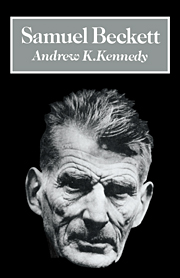Summary
Beckett has inherited the modernist writer's creed of ‘making it new’. Each new work must be an innovation not only in relation to all known forms of literature and drama, but also in relation to the author's previous work. So Endgame can be seen as a wholly new kind of play while, at the same time, it also carries certain aspects of Waiting for Godot to further points of intensity and compression. It is as if Beckett had been dissatisfied with the welltempered tragicomedy in Waiting for Godot, which left that play open to semi-naturalistic, humanist or life-affirming productions (as in the first London production in 1955). He wanted to distil a darker vision, ‘more inhuman than Godot’, in a one-act structure that gradually closes in like the final scene of a traditional tragedy. The open road of Godot is replaced by a prison-cell-like room that has two tiny windows with views of an almost dead universe. The relatively mobile Estragon and Vladimir give way to a couple whose mobility is limited in the extreme: Hamm, pushed in his chair, can only hug the walls of his minuscule stagekingdom; and Clov, who cannot sit, can only run to and fro from wall to wall, from centre to circumference. In Beckett's most famous stage image, Nell and Nagg spend the entire ‘action’ confined to dustbins – legless, in perfect immobility. The cyclic rundown and the exhaustion of all physical and psychic resources is intensified; the cycle is not repeated and the ending has a starker finality.
Information
- Type
- Chapter
- Information
- Samuel Beckett , pp. 47 - 66Publisher: Cambridge University PressPrint publication year: 1989
